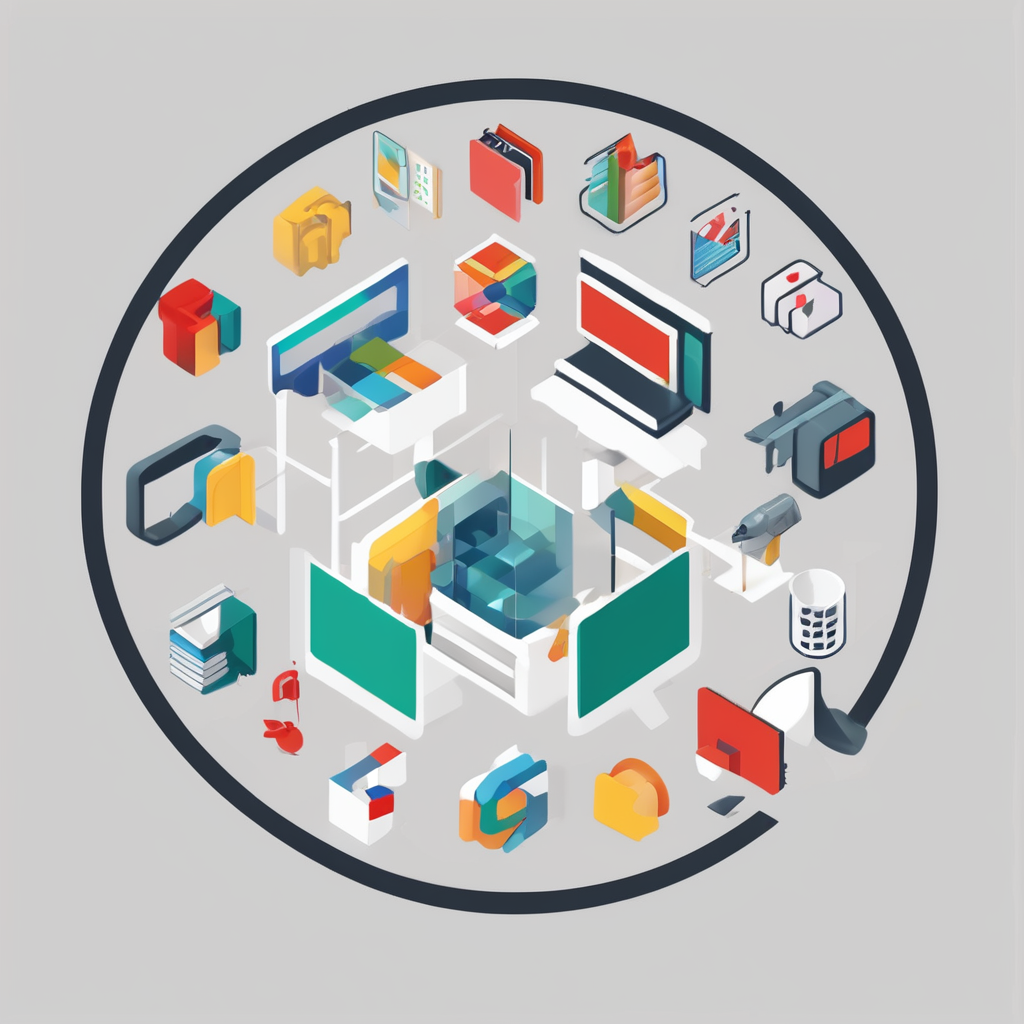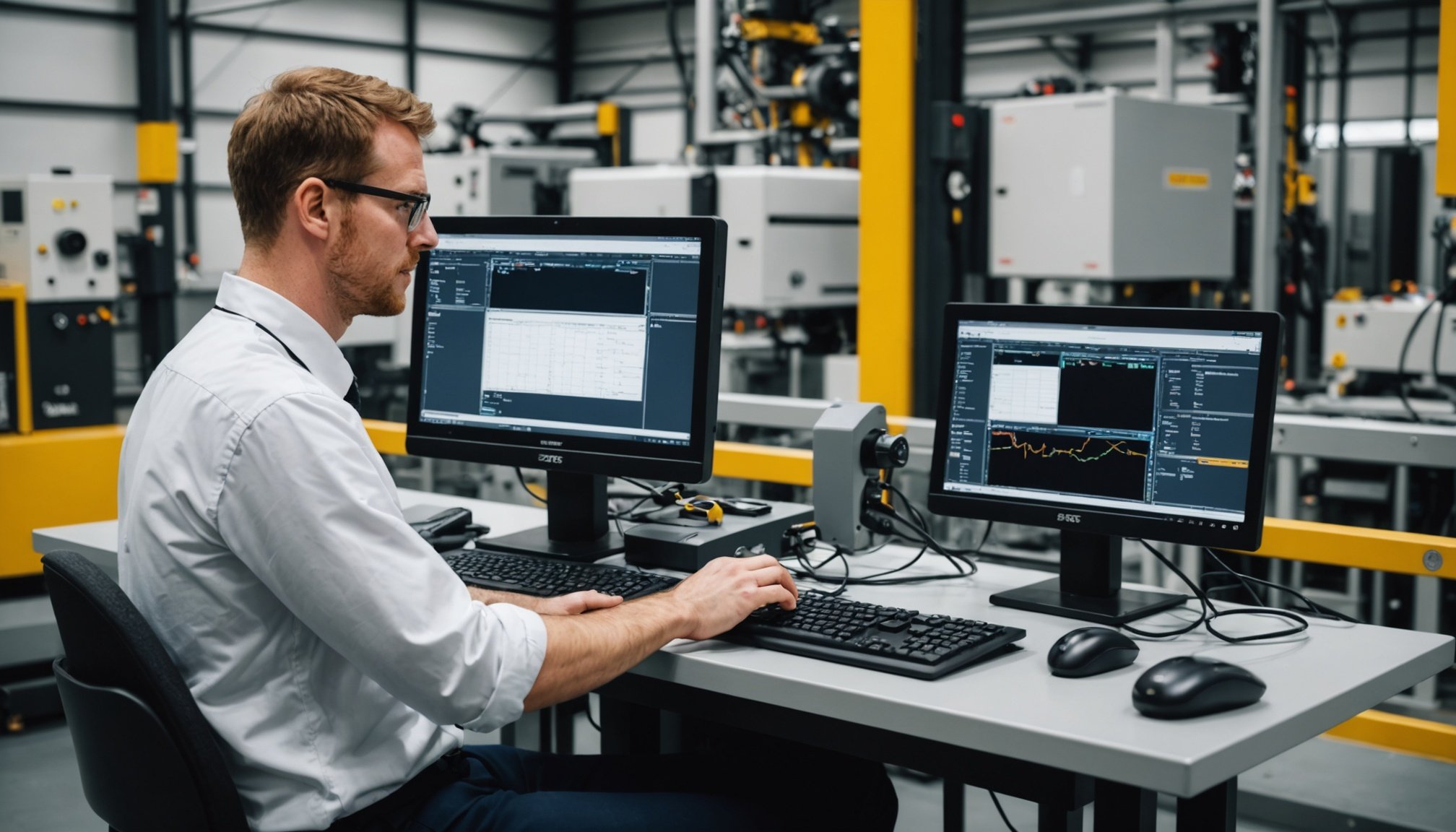Overview of Remote Monitoring in Manufacturing
Remote monitoring in manufacturing is a progressive approach to enhance manufacturing efficiency by leveraging various productivity tools. It fundamentally involves collecting real-time data from manufacturing processes using sophisticated technologies, and transmitting this data to a centralized location for analysis.
Key Technologies
Several key technologies are pivotal in enabling remote monitoring. These include the Internet of Things (IoT), which allows devices to communicate and relay data, and cloud computing platforms that store and process these vast amounts of information. Furthermore, advanced data analytics tools play a crucial role in interpreting the collected data to provide actionable insights.
Also read : Boosting Omnichannel Triumph: Creative Strategies for UK Retailers to Enhance Customer Experience
Trends in the UK
In the UK, the adoption of remote monitoring is on a notable rise, driven by a need to remain competitive and efficient. Manufacturers are increasingly investing in smart technologies to not only streamline operations but also to cope with unforeseen challenges such as supply chain disruptions. As industries push for greater automation and digitalization, remote monitoring is becoming a critical element in achieving these goals, promising significant improvements in product quality, cost efficiency, and overall manufacturing efficiency.
Enhancing Productivity through Remote Monitoring
Remote monitoring offers numerous benefits for productivity improvement in manufacturing. A primary advantage is the ability to reduce downtime and waste, significantly boosting operational efficiency. By continuously collecting real-time data, manufacturers can make swift, informed decisions, identifying issues before they escalate into costly disruptions.
Additional reading : Mastering Social Media for UK Fitness Influencers: A Blueprint for Success
Utilising remote technologies ensures that data from every stage of production is accurately captured and analysed. This constant flow of information enables the precise monitoring of equipment performance, reducing the risk of unexpected failures. Moreover, streamlined communication between devices allows for seamless coordination and adjustments, enhancing productivity improvement across the board.
Furthermore, remote monitoring empowers organisations to optimise resource allocation. By understanding the precise needs of each manufacturing process, companies can better manage their operational efficiency. This approach helps minimise excess usage of materials and energy, translating directly into cost savings and reduced environmental impact.
Ultimately, embracing remote monitoring technologies is not just about enhancing current capabilities but fostering a continuous cycle of improvement. As insights gathered through these systems highlight areas for refinement, manufacturers can implement targeted strategies that align with their long-term goals. Addressing these key aspects can lead to sustained productivity growth, ensuring a competitive edge in manufacturing efficiency.
Case Studies of Successful Implementation
Successful implementation of remote monitoring can transform manufacturing processes across various sectors in the UK. Through detailed case studies, we explore the tangible benefits and insights derived from integrating remote monitoring technologies.
Case Study: A Leading Manufacturer
In the automotive industry, a leading manufacturer embraced modern remote monitoring tools to monitor assembly line performance. By leveraging these technologies, the company could collect and analyse data in real-time, leading to significant productivity gains. The measurable outcomes were impressive: a 20% reduction in operational downtime and a 15% improvement in overall manufacturing efficiency.
Case Study: SME in the Manufacturing Sector
One SME faced challenges like outdated equipment and inconsistent production quality. Through remote monitoring, they implemented tailored solutions, resulting in precise monitoring of their operations. The benefits included enhanced quality control and a noticeable decrease in resource wastage. The lessons learned highlighted the importance of customizing the implementation to meet specific business needs.
Comparative Analysis of Different Industries
By comparing applications of remote monitoring across sectors such as aerospace, healthcare, and textiles, diverse challenges and innovative solutions emerge. Unique environments require industry-specific strategies to maximise the benefits of such technologies. This comparative analysis provides key insights and best practices for businesses seeking to flourish in various manufacturing landscapes.
Statistics on Productivity Improvements
Delving into the realm of remote monitoring, it is crucial to consider productivity statistics that underscore its transformative impact on manufacturing. A variety of studies have established that the integration of these technologies significantly boosts manufacturing efficiency. According to recent surveys, businesses employing remote monitoring have seen up to a 25% increase in overall productivity.
This enhancement is largely attributed to data-driven decision making, as real-time analytics enable companies to promptly address issues, reducing operational downtime by approximately 30%. Such statistics highlight the profound influence of leveraging real-time data, illustrating how swift responses to potential disruptions directly contribute to enhanced operational efficiency.
For businesses aiming to present these compelling productivity improvements, understanding data visualization strategies is vital. Utilising clear charts and graphs can effectively communicate complex data patterns, demonstrating the tangible benefits of remote monitoring to stakeholders. Employing these visual tools not only engages the audience but also underscores the practical gains in productivity achieved through strategic technology implementation.
Overall, these productivity statistics reinforce the value of adopting remote monitoring and underscore its capacity to revolutionise manufacturing processes, guiding companies towards a future of heightened efficiency and competitive advantage.
Best Practices for Implementing Remote Monitoring
Implementing remote monitoring systems in manufacturing requires a strategic approach to ensure success. Adopting effective implementation strategies involves a carefully planned process that begins with choosing the right manufacturing technology. It’s essential to evaluate the specific needs of the business and select technologies that align with these objectives.
Providing comprehensive training and ongoing support for staff is pivotal. Employees must be well-equipped to handle the new systems and maximise their potential. Tailored training programs that focus on technical proficiency and productivity tools usage are highly beneficial.
Monitoring and evaluation frameworks are crucial for assessing the impact of remote monitoring over time. By establishing clear performance metrics and regularly reviewing them, companies can track their operational efficiency and identify areas for further improvement.
Essential best practices for implementation include:
- Initiating a pilot project to test the technology in a controlled environment.
- Ensuring robust data security measures to protect sensitive information.
- Facilitating open communication channels for feedback and adjustments.
By following these practices, manufacturers can efficiently integrate remote monitoring and harness its full potential, leading to transformative improvements in manufacturing efficiency and sustained productivity growth.
Expert Opinions and Insights
In the rapidly advancing field of remote monitoring, insights from industry experts provide valuable perspectives on the effective use of these technologies. Experts agree that technological advancements are pivotal in elevating manufacturing efficiency.
Prominent voices in the industry highlight the necessity of adapting to new tools. They stress that continuous education and training are crucial for successful integration. Such strategies ensure every team member uses productivity tools to their full potential, aligning with business objectives.
Interviews with industry leaders reveal consistent emphasis on future developments. There is a strong focus on artificial intelligence and machine learning as transformative forces. These technologies promise to enhance data processing capabilities, allowing for more refined operational efficiencies.
Experts recommend a proactive approach towards regular upgrades of remote monitoring systems. This ensures that the most current innovations are leveraged to optimise processes and increase productivity. Additionally, maintaining flexibility in technology adoption is imperative. The ability to swiftly adapt to unforeseen market changes can provide a competitive advantage.
For manufacturing sectors aiming for excellence, understanding these expert opinions can guide the strategic implementation of remote monitoring. This fosters a robust platform for future growth and sustainability in today’s competitive landscape.











